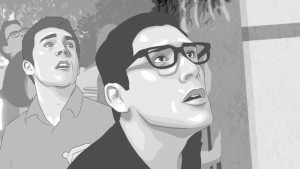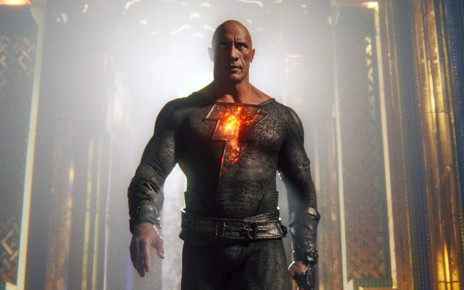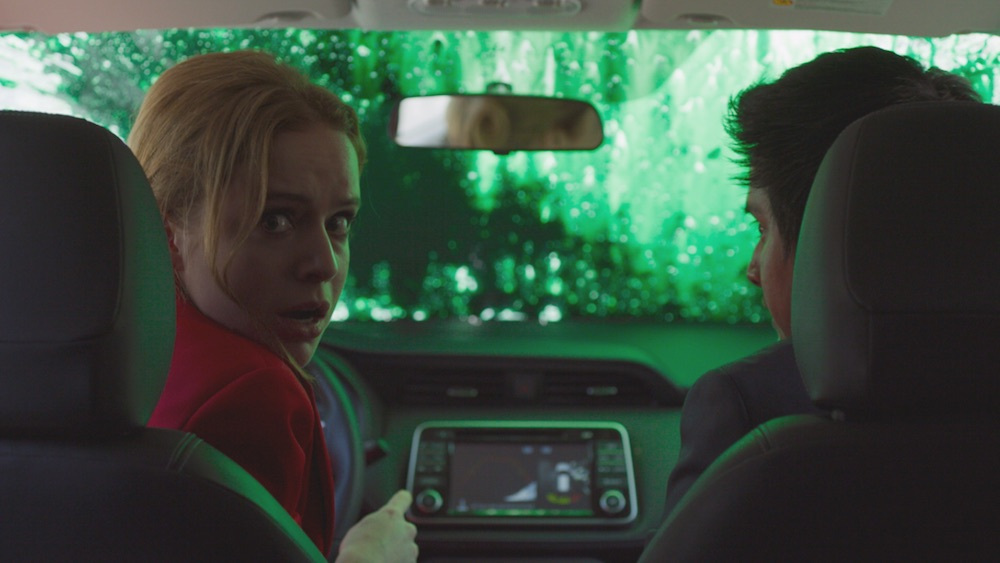A little after noon on August 1, 1966, a lone man with a small arsenal climbed to the observation deck at the Tower on the campus of the University of Texas at Austin. Then he started shooting.
This is not his story. In fact, the instigator of this mess is barely named in the film. Tower is about those on the other side of the rifle scope: the people who lived, the people who died, and especially the people risked their own lives to help others – and if there’s a better definition of “hero” than an unarmed person making themselves a target to save the life of an immobile person, I don’t know what it is.
Tower recounts the action of the day specifically from the point of view of those in the firing line. It isn’t concerned with forensics. We aren’t told exactly where eight-months-pregnant Claire Wilson was shot, just that she was the first hit by a bullet coming from the observation deck and after she was shot, the baby stopped moving and Claire lay prone in the quad. We are told about the path of Officer Houston McCoy, who heard about the shooting on the radio, paper boy Aleck Hernandez, Jr., shot in the arm as he balanced his cousin on the handlebars of his bike, and University Book Store manager Allen Crum, who inexplicably kept moving closer and closer to the Tower when others fled or took up defensive positions. [One of the key defensive positions, btw, was behind a campus statue of Jefferson Davis; I have no idea why I find this so amusing. Perhaps it’s because the actions of Davis in the 1860s created so many deaths and one hundred years later, he’s slowly making up for it.]
Rita Starpattern, John Fox, and James Love all went out to help Claire Wilson while the shooter was still making mincemeat of the campus. Unable to move or coerce Claire by herself, Rita actually stayed with Claire in full view of the observation deck for over a half hour.
We know no video tape exists for most of this stuff. All the blank moments are animated and much of the live action has followed suit in an animation overlay technique called Rotoscoping. We’ve seen this style used, seemingly at random, in Richard Linklater films A Scanner Darkly and Waking Life. The application in Tower is far superior – the problem with the hand-held personal camerawork of the era is that everything looks like the Zapruder film, which is to say it’s 2% enlightening and 98% frustrating. In Tower, the animated overlay gives, ironically, a much clearer idea of what’s happening, and at the same time avoids the very dated look of hand-held camerawork from the era.
For the most part, Tower wants to play nice. It just isn’t into the political scene, man … well, unless you consider the factual reporting of mass murder on a college campus a political statement, which, unfortunately, does not eclipse our present reality. Goodness knows Tower could have been very political, starting -perhaps- with a commentary on the State of Texas’ 2016 decision to allow open carry on campus — which, get this, went into effect exactly fifty years after this very tragedy. Two questions come to my mind instantly: 1) Are you wistful, nay nostalgic, for this glorious hour-and-a-half of campus shooting? 2) Have you been having problems in the fifty years since with guns at Texas universities? Because you’re gonna. Most of them will be suicide attempts, of course – where the success rate will be higher than other means. But some won’t. Is this what you want, Texas? On August 1, 1966, plenty of folks had guns on campus and the lone terrorist was still able to hold the Tower for 96 minutes.
had guns on campus and the lone terrorist was still able to hold the Tower for 96 minutes.
I grew up knowing this UT Austin massacre was the first mass campus shooting of its kind in the United States. If you’re like me, you know “of” the event – University of Texas, Columbine, Newtown, Virginia Tech, etc. – much more than you know the actual details. When details do emerge, they generally find the perspective of the criminal, the terrorist. We learn the path, the weapons, the psychology. The victims are an afterthought. They’re so much an afterthought in many cases, that there are assholes out there who not only imagine, say, that Newtown was a hoax; they have published material to that effect. Tower is a refreshing reflection on those who weren’t in the Tower, but instead endured something awful; their story is more important. The film knows it and now we know it.
A reality of chaotic abound
Required heroes to be found
The jerk in the tower
Might have held the power
But glory went to those on the ground
Not Rated, 96 Minutes
D: Keith Maitland
W: (Charles Whitman)
Genre: Recreating painful history
Type of person most likely to enjoy this film: Those who care about the victims more than the shooter
Type of person least likely to enjoy this film: Charles Whitman



